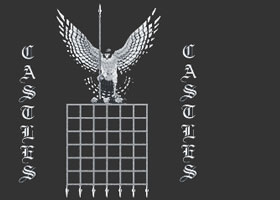| | The Derivation of the word 'Guild'
The word “guild” is from the Saxon “gilden” meaning "to pay" and refers to the subscription paid by the members. The guilds were licensed from 1170 and were similar to modern labor unions where the guilds set standards for their professions and protected the interests of their members. Merchant Guilds
Travelling during the Medieval era was dangerous. The merchants of the 10th Century 10th formed organizations for mutual protection of their horses, wagons, and goods when moving about the land. | | | |
| | Craft Guilds
The tradesmen and craftsmen of the Medieval era also formed organizations for protection and mutual aid. There were Guilds for all trades including stone masons, carpenters, cloth makers, shoemakers, apothecaries, masons, painters etc. These Medieval Guilds became powerful and soon no one could practice a trade without belonging to the appropriate guild. The objectives of the Craft guilds were the protection of members from outside competition, ensuring fair competition between members and maintaining high standards of quality. |
Medieval Guilds
The Medieval Guilds of London - Ceremonial Livery
The formal name for the London Guilds are livery companies. This referred to the elegant apparel, called livery, that their guild members wore on special and ceremonial occasions. The livery was adopted by the guilds of London in the reign of King Edward III (1312 - 1377). The clothes, or livery, worn by the merchants were extremely important as they identified the merchants with a specific guild and distinguished their members from one another. The merchants of the guilds would wear their livery when they marched in parades and processions and attended ceremonies and other Royal gatherings.
Medieval Guilds - The Medieval Guild Apprentice
- Medieval Guild Journeyman
- A Master craftsman Guild member
- Medieval Merchant Guilds
- The Medieval Craft Guilds
- Guild membership and status
The Medieval Guilds
The guilds were an important part of Medieval life. A higher social status could be achieved through guild membership and Guild members were supported by the Guild if they became sick. There were two main kinds of guilds - merchant guilds and craft guilds. A man would have to work through three phases to become an elite member of a Medieval Guild: - Apprentice - A Medieval Guild Apprentice was sent to work for a 'Master' during his early teens. The Apprenticeship lasted between 5 and 9 years depending on the trade. During this time the apprentice received no wages - just his board, lodging and training. An Apprentice was not allowed to marry until he reached the status of a Journeyman.
- Journeyman - A Medieval Guild Journeyman was paid for his labour. During this time the Journeyman would create his 'Masterpiece', in his own time, which he would present to the Guild as evidence of his craftsmanship in the hope of being accepted as a 'Master'. It was difficult to reach the status of 'Master' and much depended on the Journeyman's standing and acceptance by the top members of the Guild
- Master - A Medieval Guild Master craftsman could set up his own workshop and train his own apprentices
|
|
|

